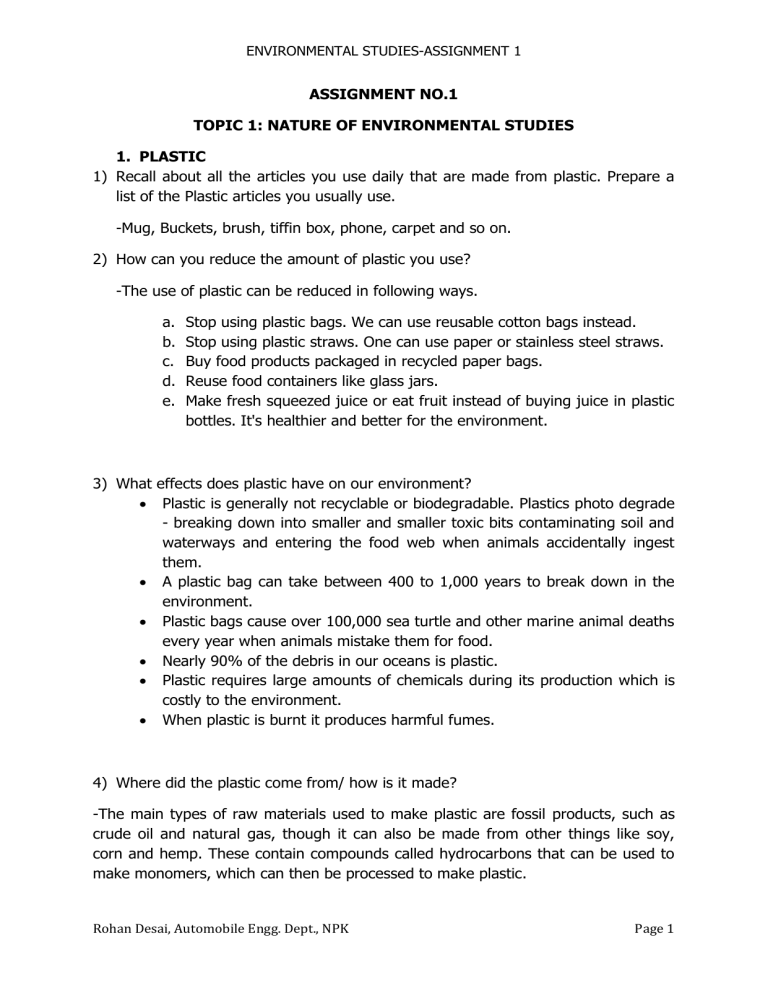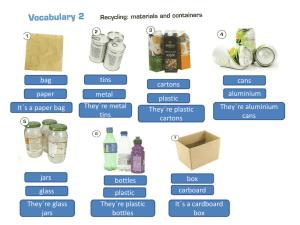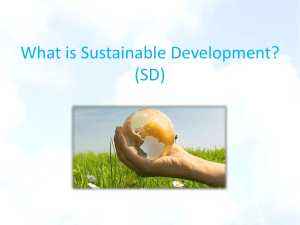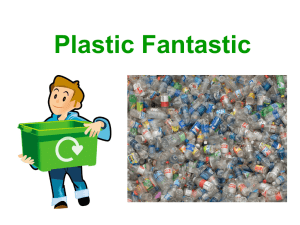Assignment 01

ENVIRONMENTAL STUDIES-ASSIGNMENT 1
ASSIGNMENT NO.1
TOPIC 1: NATURE OF ENVIRONMENTAL STUDIES
1.
PLASTIC
1) Recall about all the articles you use daily that are made from plastic. Prepare a list of the Plastic articles you usually use.
-Mug, Buckets, brush, tiffin box, phone, carpet and so on.
2) How can you reduce the amount of plastic you use?
-The use of plastic can be reduced in following ways. a.
Stop using plastic bags. We can use reusable cotton bags instead. b.
Stop using plastic straws. One can use paper or stainless steel straws. c.
Buy food products packaged in recycled paper bags. d.
Reuse food containers like glass jars. e.
Make fresh squeezed juice or eat fruit instead of buying juice in plastic bottles. It's healthier and better for the environment.
3) What effects does plastic have on our environment?
Plastic is generally not recyclable or biodegradable. Plastics photo degrade
- breaking down into smaller and smaller toxic bits contaminating soil and waterways and entering the food web when animals accidentally ingest them.
A plastic bag can take between 400 to 1,000 years to break down in the environment.
Plastic bags cause over 100,000 sea turtle and other marine animal deaths every year when animals mistake them for food.
Nearly 90% of the debris in our oceans is plastic.
Plastic requires large amounts of chemicals during its production which is costly to the environment.
When plastic is burnt it produces harmful fumes.
4) Where did the plastic come from/ how is it made?
-The main types of raw materials used to make plastic are fossil products, such as crude oil and natural gas, though it can also be made from other things like soy, corn and hemp. These contain compounds called hydrocarbons that can be used to make monomers, which can then be processed to make plastic.
Rohan Desai, Automobile Engg. Dept., NPK Page 1
ENVIRONMENTAL STUDIES-ASSIGNMENT 1
Once the monomers are extracted, they are chemically treated to make them bond together and form long polymer chains. This is normally done by polymerization. In this process, the monomers are mixed with another chemical that acts as a catalyst and causes them to combine with each other, forming a resin. After this, the resin polymers can be molded or shaped into the end product.
5) What happens to it when you throw it away/where does it go?
-Plastics are generally not bio-degradable. Therefore when the plastics are thrown away they do not decompose. Instead they are deposited in landfills taking up huge space. Plastics photo-degrade. They break down into smaller and smaller toxic bits contaminating soil and waterways which is harmful for the ecosystem.
2.
FOSSIL FUELS
How much do you use daily, weekly and annually? Can you reduce your consumption?
-Daily- half litre, Weekly-3.5 litre and Yearly-180 litre.
The fuel consumption can be reduced in the following ways. a.
Minimizing vehicle use: We can use public transport or non-motorized options like bicycle and walk. Also sharing a ride to work with a friend or two effectively doubles the fuel economy. b.
Driving in the right gear. c.
Driving smoothly. Stop/start driving is much less efficient and more polluting than driving at a constant speed. d.
Minimizing fuel wasted in idling. e.
Using air conditioning sparingly.
What effect does it have on the air we breathe?
-One of the major causes of air pollution is burning of fossil fuels. Combustion of fossil fuels liberates gases like carbon dioxide and carbon monoxide. Carbon monoxide (CO) combines with hemoglobin in the blood to form carboxyhaemoglobin and makes it incapable of transporting oxygen. Many hydrocarbons are serious health hazards.
When we leave a motorbike or car running during a traffic stop, we do not usually remember that the fuel we are wasting is a part of a non-renewable resource that the earth cannot reform. Once all the fossil fuels are burnt off, it will mean the end of oil as a source of energy.
Only if each of us contributes our part in conserving fossil based energy can we make it last longer on earth.
Rohan Desai, Automobile Engg. Dept., NPK Page 2
ENVIRONMENTAL STUDIES-ASSIGNMENT 1
3.
WATER
How much do you really need to use, as against
how much you waste when you:
(a) Brush your teeth?-a mug, (b) Have a bath?-a full bucket, (c) Wash clothes?-three buckets (d) Wash the scooter or car? – 2 buckets.
Where did the water come from? What is its actual source? How has it reached you?
-A clean, constant supply of drinking water is essential to every community.
People in large cities frequently drink water that comes from surface water sources, such as lakes, rivers, and reservoirs. Sometimes these sources are close to the community. Other times, drinking water suppliers get their water from sources many miles away. In either case, when you think about where your drinking water comes from, it’s important to consider not just the part of the river or lake that you can see, but the entire watershed. The watershed is the land area over which water flows into the river, lake, or reservoir
Where will the waste water go?
-It is sent to a wastewater treatment plant or water recycling plant to be cleaned.
In the absence of such waste water treatment plant this polluted water gets mixed in rivers.
Rohan Desai, Automobile Engg. Dept., NPK Page 3







